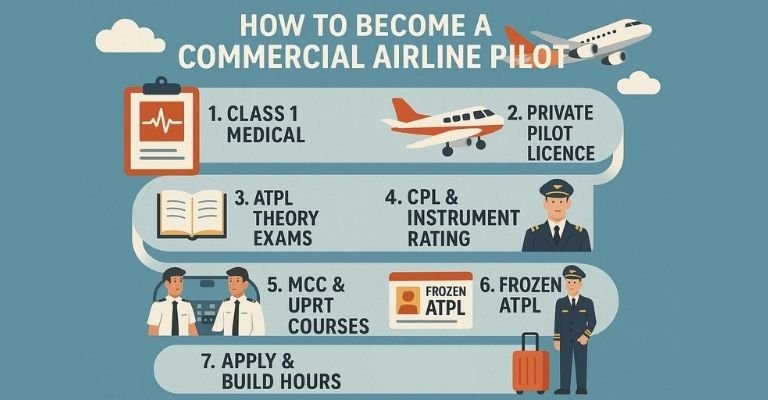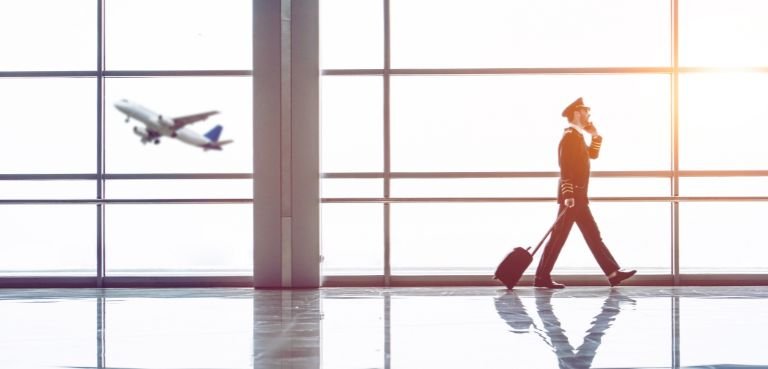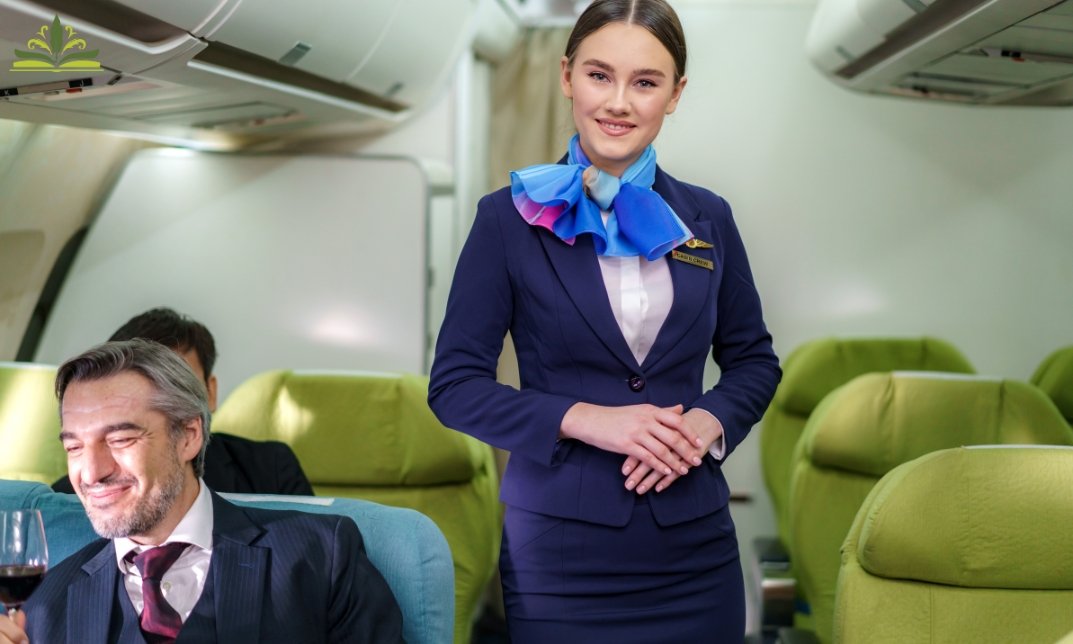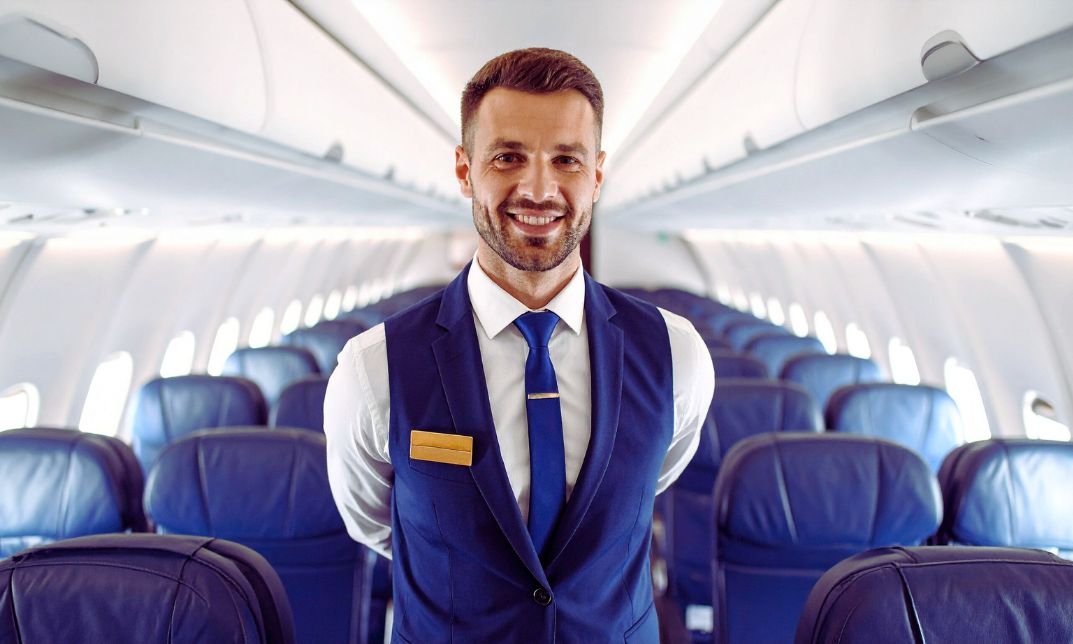No products in the cart.
Ever looked up at a plane flying overhead and thought: “What qualifications do you need to be a pilot?” You’re not alone. Flying for an airline is a dream for many—it’s exciting, adventurous, and comes with huge responsibility.
In the UK, the Civil Aviation Authority (CAA) sets out a clear path. You begin with a Private Pilot Licence (PPL), then progress through theory exams and advanced training until you hold a “frozen” Airline Transport Pilot Licence (ATPL). That’s your ticket to apply for airline jobs.
Later, after building enough flying hours, your licence “unfreezes.” That’s the moment you qualify to sit in the captain’s seat and lead a flight. The journey isn’t simple. It takes focus, discipline, and commitment. But thousands of pilots have done it—and if flying is your dream, there’s every chance you can do it too.
In this guide, we’ll cover everything: the licences, the training, the hours, the costs, and the different routes to make your airline pilot dream a reality.
What Qualifications Do You Need to Be a Pilot for Commercial Airlines?

You don’t need university, but you do need training and licences. Here’s the step-by-step journey:
1. Get a Class 1 Medical
Your first step is proving you’re fit to fly. You’ll need a Class 1 medical check with an aviation doctor. They’ll test your eyesight, hearing, heart, and overall health. If you pass, you’ll get a certificate. Without this, you can’t start commercial pilot training. Think of it as your ticket to begin.
2. Start with a Private Pilot Licence (PPL)
Next, you’ll train for a Private Pilot Licence. This is where you learn the basics—how to take off, land, and control a small aircraft. You need at least 45 hours of flying. A PPL lets you fly for fun but not for pay. It’s like learning to drive before you can work as a professional driver.
3. Study for the ATPL Theory Exams
After that, it’s time to hit the books. Every airline pilot must pass 13 theory exams. These cover topics like Air Law, Weather, Navigation, and Human Performance. Don’t worry—you don’t take them all at once. Flight schools guide you step by step until you pass them all.
4. Train for a CPL and Instrument Rating (IR)
Now you move on to advanced training. The Commercial Pilot Licence (CPL) is what allows you to get paid to fly. Alongside this, you’ll train for an Instrument Rating (IR), which lets you fly in poor weather or when you can’t see outside. By this point, you’ll have around 200 total flying hours.
5. Complete MCC and UPRT Courses
Airline flying is always done with two pilots, so you’ll take the Multi-Crew Cooperation (MCC) course. This teaches you how to share duties and make decisions as a team. You’ll also do Upset Prevention and Recovery Training (UPRT), which shows you how to safely handle unusual or dangerous flight situations. Both are required before moving on to airline aircraft.
6. Earn Your Frozen ATPL
When you’ve passed your exams and finished all the training, you’ll be awarded a frozen ATPL. “Frozen” means you can work as an airline co-pilot, but not as a captain yet. This is the licence airlines ask for when they hire new pilots.
7. Apply to Airlines and Build Your Hours
With your frozen ATPL, you can start applying for airline jobs. You’ll begin as a co-pilot, working with experienced captains. As you fly more, you’ll build up your hours. Once you reach 1,500 total hours, your licence becomes a full ATPL, and that’s when you can apply to become a captain.
Which Licences Are Required to Fly Commercially?
1. PPL (Private Pilot Licence – PPL(A))
- Entry licence.
- Requires at least 45 flying hours.
2. CPL (Commercial Pilot Licence – CPL(A))
- Allows you to get paid to fly.
- Can be issued from age 18 with the required theory, hours, and a Class 1 medical.
3. ATPL (Airline Transport Pilot Licence – ATPL(A))
- Full airline captain licence.
- Requires at least 1,500 total flying hours.
- Minimum issue age: 21.
What Are the Minimum Age and Medical Requirements?
Minimum Age
The age rules for becoming a pilot are simple. You must be 17 to get a Private Pilot Licence, 18 to hold a Commercial Pilot Licence, and 21 to be issued a full Airline Transport Pilot Licence, which is what you need to become a captain. These milestones make sure pilots have enough maturity and experience at each stage of training.
Medical Requirements
Every commercial pilot must also hold a Class 1 medical certificate. This is a full health check done by an approved aviation doctor. It looks at things like eyesight, hearing, heart health, and general fitness. For most pilots under 40, the certificate is valid for 12 months. After that, or as you get older, you’ll need to renew it more often. Without a valid Class 1 medical, you can’t train or fly as a commercial pilot.
How Many Flying Hours Do You Need for a Commercial Pilot Licence?

To get a Commercial Pilot Licence (CPL) in the UK, you need about 200 hours of flying time. These hours include different types of practice, like flying solo, flying with an instructor, cross-country trips, and some flying at night. By the time you’ve reached 200 hours, you’ll have enough experience to be paid for flying.
To reach the top licence, the Airline Transport Pilot Licence (ATPL), you need a lot more experience—at least 1,500 hours in total. These hours must include certain categories, such as time as pilot-in-command (the one in charge), instrument flying (using cockpit instruments only), night flying, and flying in a multi-pilot crew. Until you reach 1,500 hours, your licence is called a “frozen ATPL”, which allows you to work as an airline co-pilot. Once you pass 1,500 hours, it becomes a full ATPL, which means you can apply to be a captain.
What Subjects and Skills Do Pilots Study During Training?
Becoming a pilot isn’t just about flying. A big part of your training is in the classroom. You’ll study the ATPL theory—these are the exams every airline pilot must pass.
ATPL Theory
There are 13 subjects in total. They cover things like:
- Air Law – the rules of flying
- Performance – how aircraft behave in different conditions
- Human Performance – how your body and mind work when flying
- Meteorology – understanding the weather
- Navigation – finding your way in the air
- Flight Planning – how to prepare for a safe journey
- Operational Procedures – airline routines and safety steps
- Mass and Balance – making sure the plane is loaded correctly
- Principles of Flight – why planes fly and how lift works
- Aircraft Systems & Instruments – learning about cockpit systems
- Communications – how to talk to air traffic control
These subjects give you the knowledge you’ll need to fly safely and make good decisions.
Practical Skills
On top of the classroom work, you’ll do special training to get ready for airline flying:
- MCC (Multi-Crew Cooperation): learning how to work with another pilot as a team.
- UPRT (Upset Prevention and Recovery Training): learning how to react if the plane gets into an unusual or dangerous position.
How Much Does Pilot Training Cost and How Long Does It Take?
Cost
Training to become a pilot is a big investment. In the UK, a full-time integrated course (the “all-in-one” option) usually costs between £100,000 and £115,000. This covers everything from your first flying lesson to your frozen ATPL.
There is also the modular route, where you pay for training in stages—PPL first, then theory, then CPL/IR, and so on. This option can be cheaper, with some schools quoting around £60,000–£80,000 depending on how quickly you progress and where you train.
Time
The time it takes depends on the training path you choose. An integrated course is full-time and normally lasts about 18 to 24 months. It’s designed to move you quickly from zero experience to airline-ready.
The modular route is more flexible. You can train part-time or full-time, fitting it around work or other commitments. Because of this, it often takes 2 to 5 years, depending on your pace.
Do You Need A-levels or GCSEs to Start Training?
Legally, the UK Civil Aviation Authority (CAA) does not require you to have GCSEs, A-levels, or a degree to begin pilot training. The only must-have is a valid Class 1 medical certificate.
That said, many flight schools and airline cadet schemes set their own entry rules. Most will ask for at least five GCSEs, usually including Maths, English, and Science. Some also prefer you to have A-levels in subjects like Maths or Physics (or the equivalent if you studied abroad). These aren’t legal requirements, but they do make you a stronger candidate, especially when applying for competitive airline training programmes.
In short: you don’t need formal school qualifications by law, but in practice, they often matter if you’re aiming for the big airline schemes.
Final Thoughts: The Path to Becoming a Commercial Airline Pilot
Becoming a commercial pilot is not something that happens overnight. It’s a serious journey that takes time, money, and dedication. But the good news is that the path is clear. First, you study for your ATPL theory exams, then you gain your Commercial Pilot Licence (CPL) and Instrument Rating (IR), followed by MCC and UPRT training. With that, you earn your frozen ATPL, which is the entry ticket to airline jobs as a co-pilot.
From there, the goal is to build experience. Every flight you complete adds to your logbook, bringing you closer to the magic number of 1,500 flying hours. That’s when your licence “unfreezes,” and you’re able to move into the captain’s seat.
The route you choose—integrated or modular—depends on your budget, lifestyle, and how quickly you want to qualify. Integrated is fast and structured but expensive. Modular is slower and more flexible, often cheaper. Both routes are respected by airlines and lead to the same licence.
It’s also worth looking out for airline cadet schemes, like British Airways’ Speedbird Pilot Academy or easyJet’s Generation programme. These can sometimes reduce the financial burden and give you a direct entry into the airline world.
If flying is your dream, the road is demanding, but it’s also achievable. Thousands of pilots have walked this path before you, and with the right training, focus, and determination, you can too.





